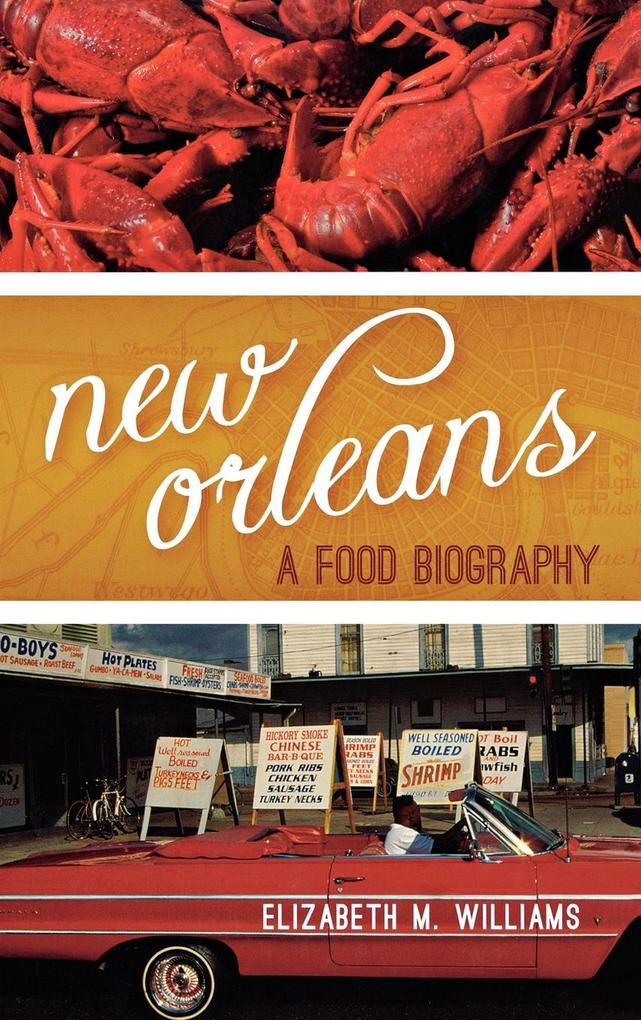
Zustellung: Sa, 16.11. - Mi, 20.11.
Versand in 1-2 Wochen
VersandkostenfreiBestellen & in Filiale abholen:
New Orleans' celebrated status derives in large measure from its incredibly rich food culture, based mainly on Creole and Cajun traditions. At last, this world-class destination has its own food biography.
Inhaltsverzeichnis
Series Foreword, by Ken Albala
Preface
Timeline
1. Introduction: A Real Cuisine
2. The Material Resources
3. The First Inhabitants and Their Foodways
4. The Old World in the New
5. Immigrants: Their Neighborhoods and Contributions
6. Markets, Retailing, and "Making Groceries"
7. Restaurants
8. Drinking in New Orleans
9. Cooking at Home and Cookbooks
10. Signature Foods and Dishes
Bibliography
Index
About the Author
Preface
Timeline
1. Introduction: A Real Cuisine
2. The Material Resources
3. The First Inhabitants and Their Foodways
4. The Old World in the New
5. Immigrants: Their Neighborhoods and Contributions
6. Markets, Retailing, and "Making Groceries"
7. Restaurants
8. Drinking in New Orleans
9. Cooking at Home and Cookbooks
10. Signature Foods and Dishes
Bibliography
Index
About the Author
Mehr aus dieser Reihe
Produktdetails
Erscheinungsdatum
19. Dezember 2012
Sprache
englisch
Seitenanzahl
212
Reihe
Big City Food Biographies
Autor/Autorin
Elizabeth M. Williams
Verlag/Hersteller
Produktart
gebunden
Gewicht
504 g
Größe (L/B/H)
235/157/17 mm
Sonstiges
HC gerader Rücken kaschiert
ISBN
9780759121362
Entdecken Sie mehr
Pressestimmen
Only in New Orleans would our food be considered just as important as any person and worthy of its own biography! So, whether you're a native New Orleanian or simply a fan of our cooking, just reading New Orleans: A Food Biography is sure to satisfy your craving. This book digs into the rich, centuries-old history of the many ethnic and geographic influences that have gone into making our cuisine so uniquely New Orleans. -- Dickie Brennan, New Orleans chef/restaurateur Liz Williams loads us into her time capsule for a journey to the mecca of New World cuisine. Through New Orleans: A Food Biography we experience the richness of the original fusion cuisine. New Orleans brought together every Western food tradition, and the Amerindian traditions, and over the centuries the glory that is New Orlean's cuisine evolved. Like to eat? Read this now. -- Dale DeGroff, master mixologist and author of The Craft of the Cocktail Williams's authoritative New Orleans: A Food Biography explains why New Orleans fare is what it is. Williams takes a comprehensive approach, detailing the many forces and establishments-from the Mississippi River, with its bounty of ship and freshwater fish, to the local grocery chain Schwegmann's-that have shaped the way the city eats and cooks. Saveur New Orleans: A Food Biography is the first in a projected series, "Big City Food Biographies," from AltaMira Press. The aim of the series is to focus on "those metropolises celebrated as culinary destinations, with their iconic dishes, ethnic neighborhoods, markets, restaurants, and chefs" and to provide "real biographies that will satisfy readers' desire to know the full food culture of a city." New Orleans, with its unique cuisine and urban culture, is an appropriate city in which to begin such a series. Williams (founder and president, Southern Food and Beverage Museum; Univ. of New Orleans) spends the first half of the book identifying the historical events, cultural influences, raw materials, and immigrant groups that greatly contributed to the creation of New Orleans cuisine. The second half of the book details restaurants, drinking culture, home cooking, and the signature New Orleans foods. The final chapter on New Orleans foods is the book's strength, highly readable and researched. The historical background provides necessary context for the evolution of New Orleans food, and a bibliography is provided). Summing Up: Recommended. General readers and lower-division undergraduates. -- S. C. Hardesty, Georgia State University CHOICE
Bewertungen
0 Bewertungen
Es wurden noch keine Bewertungen abgegeben. Schreiben Sie die erste Bewertung zu "New Orleans" und helfen Sie damit anderen bei der Kaufentscheidung.























